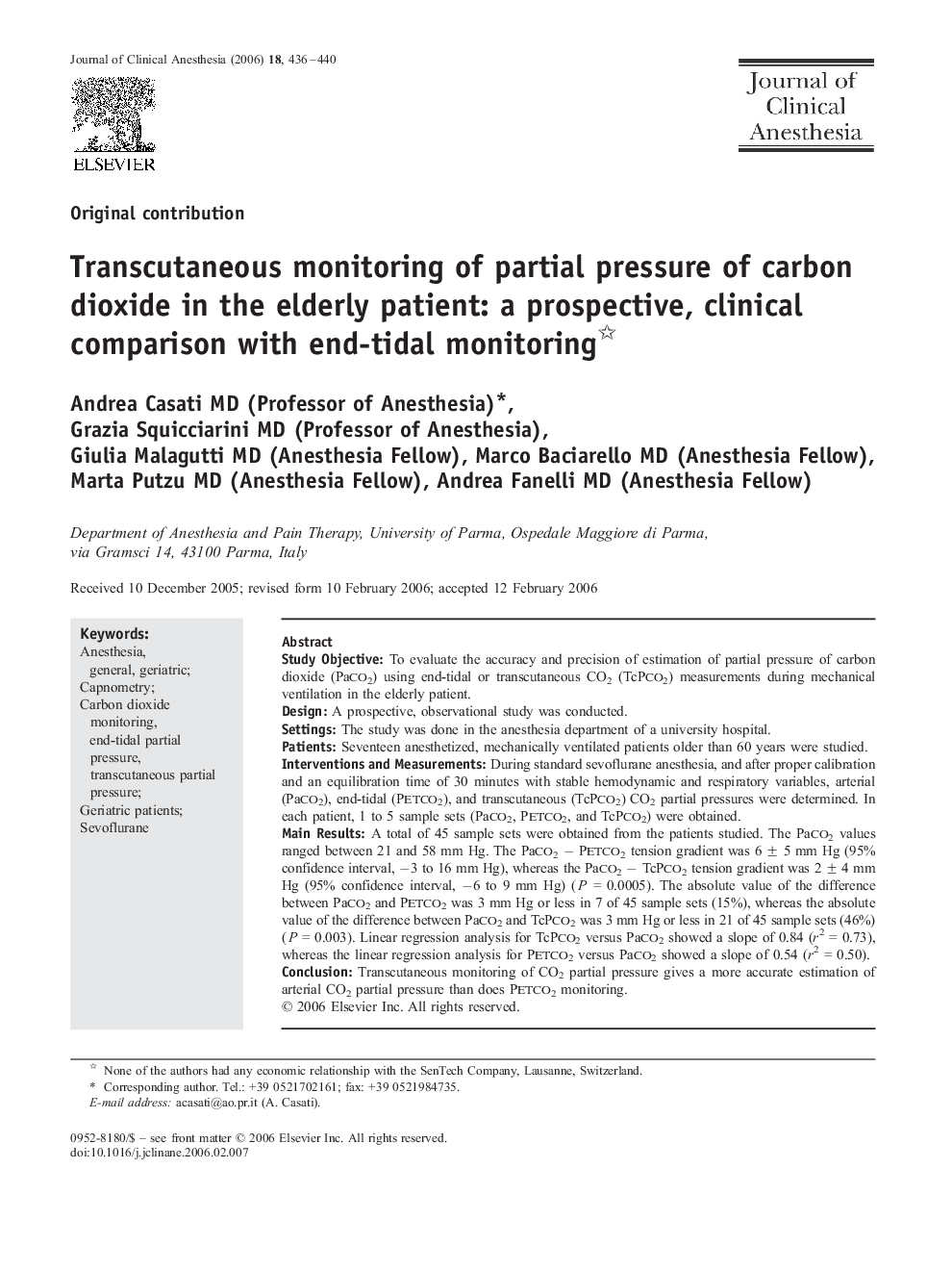| Article ID | Journal | Published Year | Pages | File Type |
|---|---|---|---|---|
| 2763820 | Journal of Clinical Anesthesia | 2006 | 5 Pages |
Study ObjectiveTo evaluate the accuracy and precision of estimation of partial pressure of carbon dioxide (Paco2) using end-tidal or transcutaneous CO2 (TcPco2) measurements during mechanical ventilation in the elderly patient.DesignA prospective, observational study was conducted.SettingsThe study was done in the anesthesia department of a university hospital.PatientsSeventeen anesthetized, mechanically ventilated patients older than 60 years were studied.Interventions and MeasurementsDuring standard sevoflurane anesthesia, and after proper calibration and an equilibration time of 30 minutes with stable hemodynamic and respiratory variables, arterial (Paco2), end-tidal (Petco2), and transcutaneous (TcPco2) CO2 partial pressures were determined. In each patient, 1 to 5 sample sets (Paco2, Petco2, and TcPco2) were obtained.Main ResultsA total of 45 sample sets were obtained from the patients studied. The Paco2 values ranged between 21 and 58 mm Hg. The Paco2 − Petco2 tension gradient was 6 ± 5 mmHg (95% confidence interval, −3 to 16 mmHg), whereas the Paco2 − TcPco2 tension gradient was 2 ± 4 mmHg (95% confidence interval, −6 to 9 mmHg) (P = 0.0005). The absolute value of the difference between Paco2 and Petco2 was 3 mm Hg or less in 7 of 45 sample sets (15%), whereas the absolute value of the difference between Paco2 and TcPco2 was 3 mm Hg or less in 21 of 45 sample sets (46%) (P = 0.003). Linear regression analysis for TcPco2 versus Paco2 showed a slope of 0.84 (r2 = 0.73), whereas the linear regression analysis for Petco2 versus Paco2 showed a slope of 0.54 (r2 = 0.50).ConclusionTranscutaneous monitoring of CO2 partial pressure gives a more accurate estimation of arterial CO2 partial pressure than does Petco2 monitoring.
